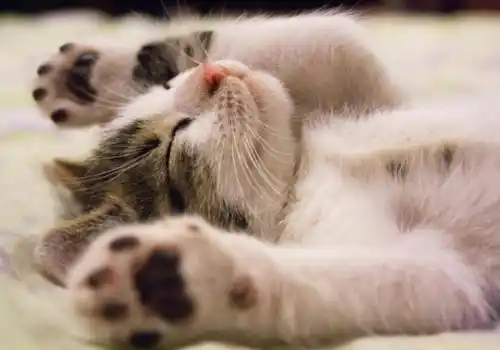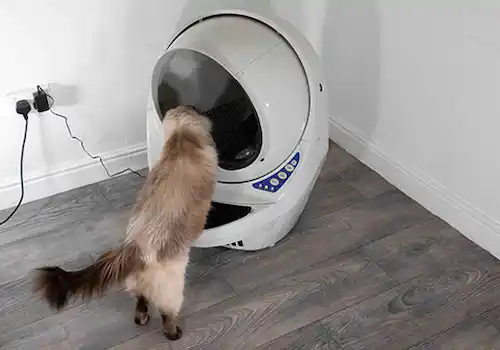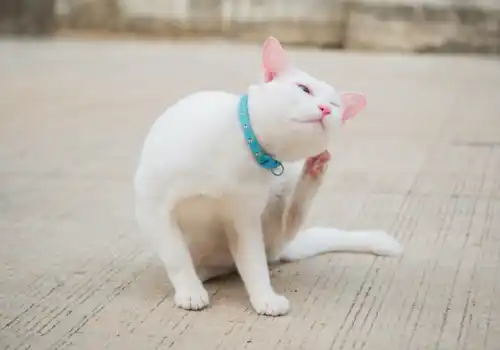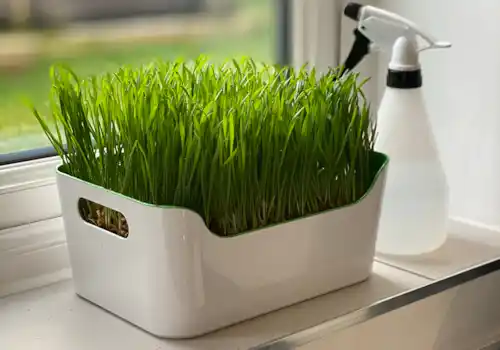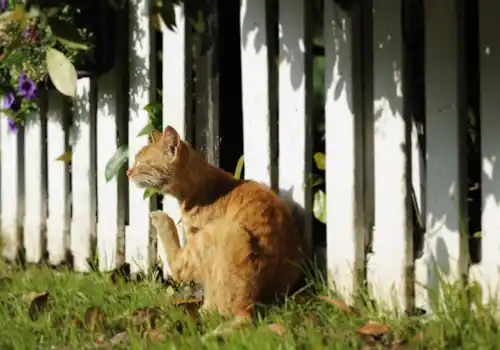From purring to meowing… what is your cat trying to say?
Yvonne Martin is a freelance journalist who specialises in health and well-being features. She is a lifelong cat-lover and lives with a shorthair tabby called Rita who has her own instagram account @ritascatworld
Some cats have a lot to say for themselves, whether it’s a cheery chirrup after they burst through the cat flap or a more insistent meow when they want to be fed.
It’s tempting to imagine that the various sounds our cats make are something akin to language and who among us has not tried to meow back at our pet in an attempt at conversation? But in fact, cats don’t audibly converse with each other and wouldn’t meow much at all if they weren’t living with us humans. Among undomesticated cats, it would largely be confined to the kitten stage.
“Meowing is generally reserved for babies and mums,” says Linda Ryan, who is a certificated clinical animal behaviourist and registered veterinary nurse (inspiringpets.com). “So, we will see babies be very vocal and babies and mums use vocalisations between each other. But adult cats generally don’t use a lot of vocalisations between each other.
“One of the exceptions to that is a polite greeting. So, you might see them come towards each other, tail up, and they might do a little, what we call a trill or a chirrup, and then they go off and do their own thing, but we don’t see a lot of meowing in those contexts.
“The contexts where we do see a lot of meowing with cats between each other as grownups is mating or fighting, or fear and distress, when they are trying to repel a perceived threat. But outside of that, they’re not very vocally chatty among themselves,” says Linda.
That’s not to say cats don’t communicate with each other, but what communication there is does not tend to be audible and much of it will be undetectable to us humans, such as pheromone chemical communication.
“They communicate a lot by scent, but vocalisations really come into their own when we’re talking about those relationships that they have with people,” says Dr Sarah Ellis, head of cat advocacy at International Cat Care (icatcare.org). And the sounds they make communicate something specific each time.
“They may communicate their emotional state, that they’re fearful, or they’re desiring something. They may also communicate an intention, like a behavioural intention, such as I’m going to approach you. They may also communicate their internal state so for example, they’re hungry or they need to go outside.”
Cats that are reproductively active and seeking a mate also meow and are transmitting a lot of information when they do that. “Other cats will be able to tell their identity from that meow, but it will also be linked to how reproductively active and potentially successful they will be,” says Sarah.
Context is key
Although each sound has a specific meaning in the moment for that individual cat, there are not common types of meows that all cats make in the same situation.
Sarah explained that even among people who love and know their cats very well, it’s nigh on impossible to know what their sounds mean if there is no context. So even if in everyday interactions you can translate your cat’s meow, if you heard a recording of it without knowing the circumstances, it would be hard to understand what it meant. Though there is research to show that people are quite good at gauging broadly whether the sounds are coming from a positive or a negative emotion.
“The reason why we do find that so difficult is not that we’re not attached to our cats, or we don’t know our cats, it’s because they’re not the same for each cat, and they’re not the same even within a cat at different time periods because, we’re shaping them, they’re changing all the time,” said Sarah.
So why do they meow when they are living with us, when they wouldn’t do it in the wild? The clue may be in that mum and kitten meowing that happens in all cats, as we cat owners have taken on that care-giving role that was once done by the mother cat.
“We think that some of the mum/baby kind of behaviour that we see with mums and kittens is what has been somewhat translated to the human/cat relationship — it’s care seeking and care giving,” says Linda.
“With humans, we think it may be a similar thing and that cats have learned to rely on us to a point. And we can give them things that they need and there’s a bond there. And so, it may be about that care seeking.”
But as with many aspects of cat behaviour, there’s a certain amount of training going on (and we won’t look too closely at who is training who!) as the cat meows and we give them what they want, whether that is food, a treat, or attention and then they continue to use that meow as a signal for what they want.
“So, a cat might ask us for something that they need because they’ve developed a relationship with us and that’s the care seeking bit, but then we reinforce it, and so we’re training it and so we end up with these really specific vocabularies in human/animal relationships.
“These little care-seeking, caregiving, reinforced vocalisations, can become a cycle that perpetuate each other, and they are relationship specific, which is really cool in my opinion.”
So, if you think you know what a particular meow from your own puss means in the right context, you’re probably right. And they have quite possibly developed that sound just for you. Interestingly, research has found not all cats in the same household will use the same vocalisations in the same circumstances — they are all individuals after all.
“While they don’t have what humans have in terms of language — for example, we have a vocabulary and we can arrange that vocabulary in all different orders to make different meanings — we can very often look at their body language and the context, in conjunction with the noise that they’re making and say that means you want some loving, or that means you want food or that means you want the door open,” says Linda.
“I don’t think they’re thinking ‘I will make this noise and this means she will feed me’, but it’s a learned interaction, and often it’s emotional rather than deliberate.” They’re not always trying to get you to do something or give them something though.
They do like to give us a greeting sometimes. Our cat Rita often does a chirrup followed by a longer meow when she comes indoors. It’s as if she is saying ‘I’m here! Where is everyone?’
“It’s a positive greeting,” says Linda. “It’s like ‘hi everyone!’ It’s a sort of little social announcement. Not all the vocalisations are about ‘I want, or I need something.’”
Why do cats make a chitter sound when they see a bird they can’t get at? Often you will hear a cat make a stuttering series of throaty noises if they see a bird, perhaps on the other side of a window.
“Nobody really knows what that is, but we think it’s related to frustration or intention,” says Linda. “If you see your little cat sitting on the window, watching the bird feeder, could it be that they’re frustrated that they can see it, but they can’t get it? It’s possible, so we often see that when they’re frustrated. But some people say it’s intention. They’re not telling the bird and they’re not telling any compadres because they don’t have hunting friends, but they’re saying ‘I’m coming to get you’ and it’s almost like an unconscious instinctive or emotional noise.”
What does purring mean? In most cases, purring does seem to indicate contentment, especially that steady, low frequency purr. “That’s ‘I’m happy, I’m sitting on your knee, do more, I love this. ’That’s genuinely a contented sound,” says Linda.
But sadly, a purr can also happen when the situation is quite the reverse, when the cat is in extreme distress. “I’ve very often seen a cat who is very ill, or a cat in the intensive care unit that is dying or in extreme pain, and they will often be purring, and we think that is an attempt to comfort themselves. There’s also a theory that purring creates ultrasonic waves at a wavelength that heals.”

